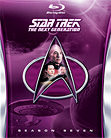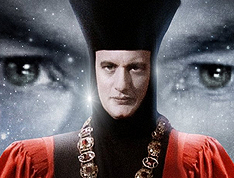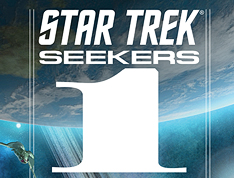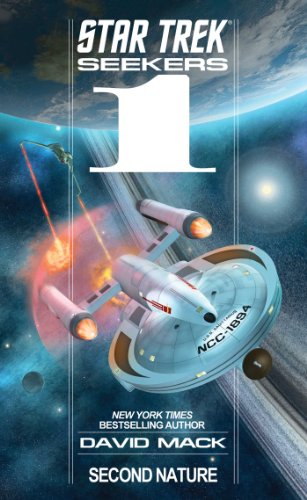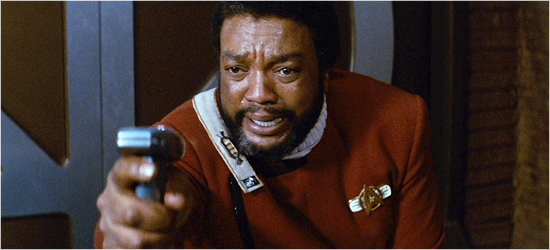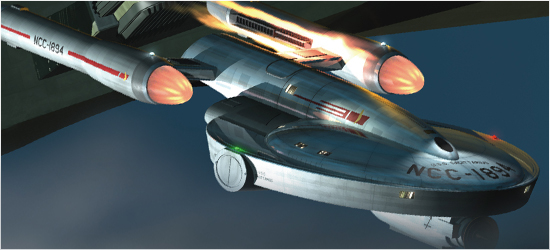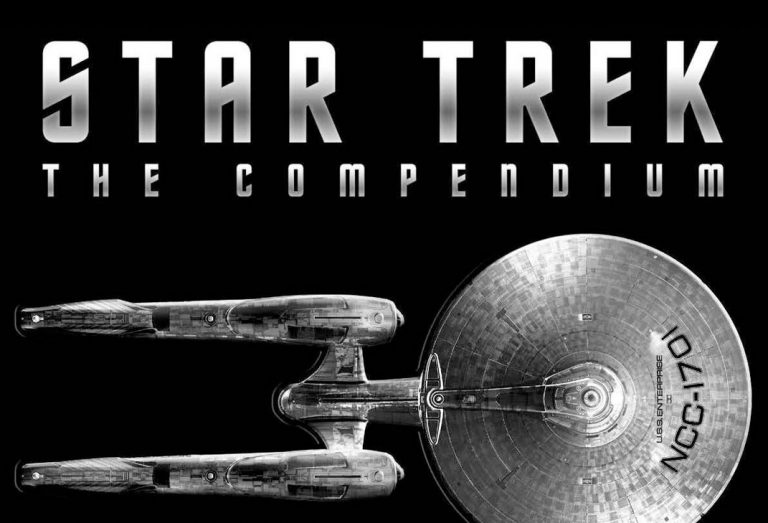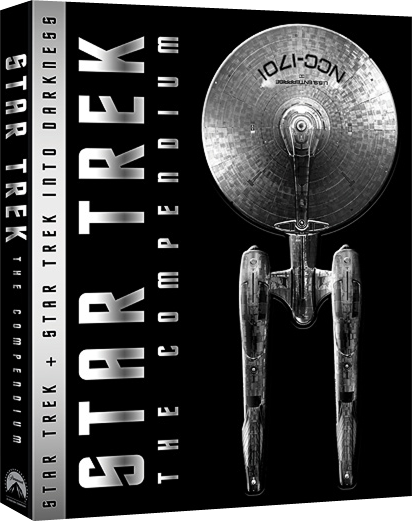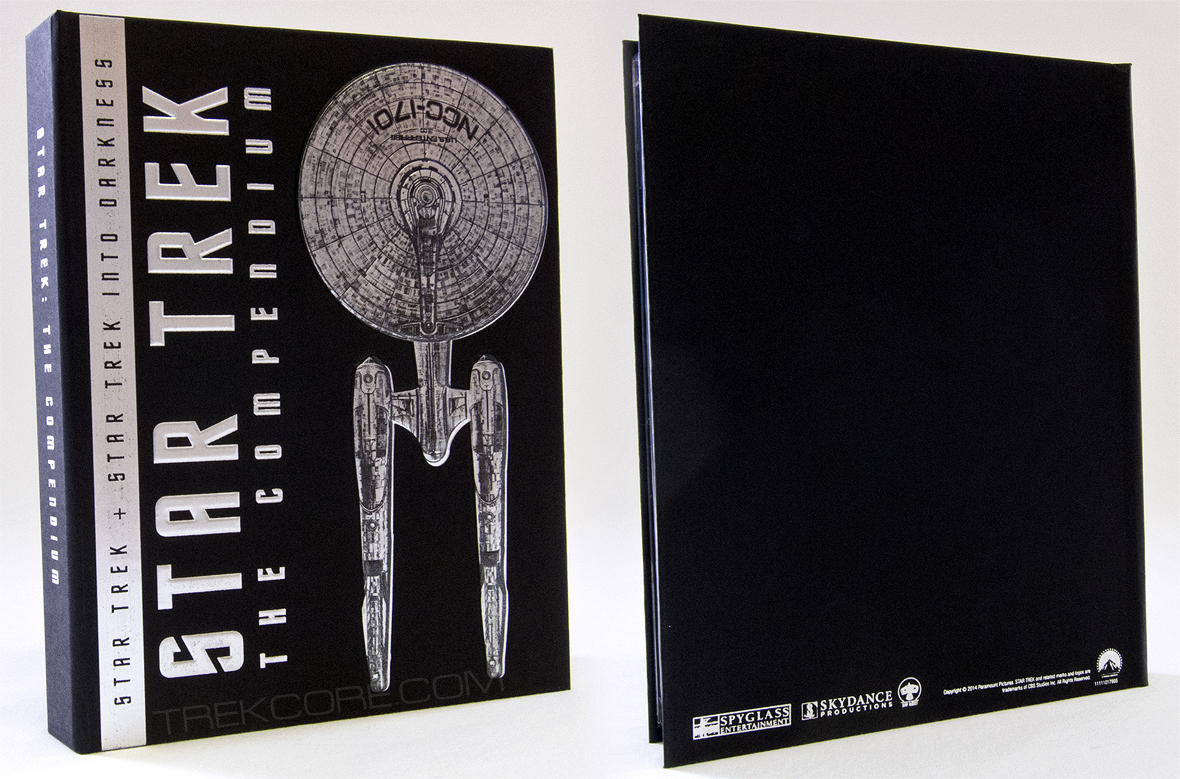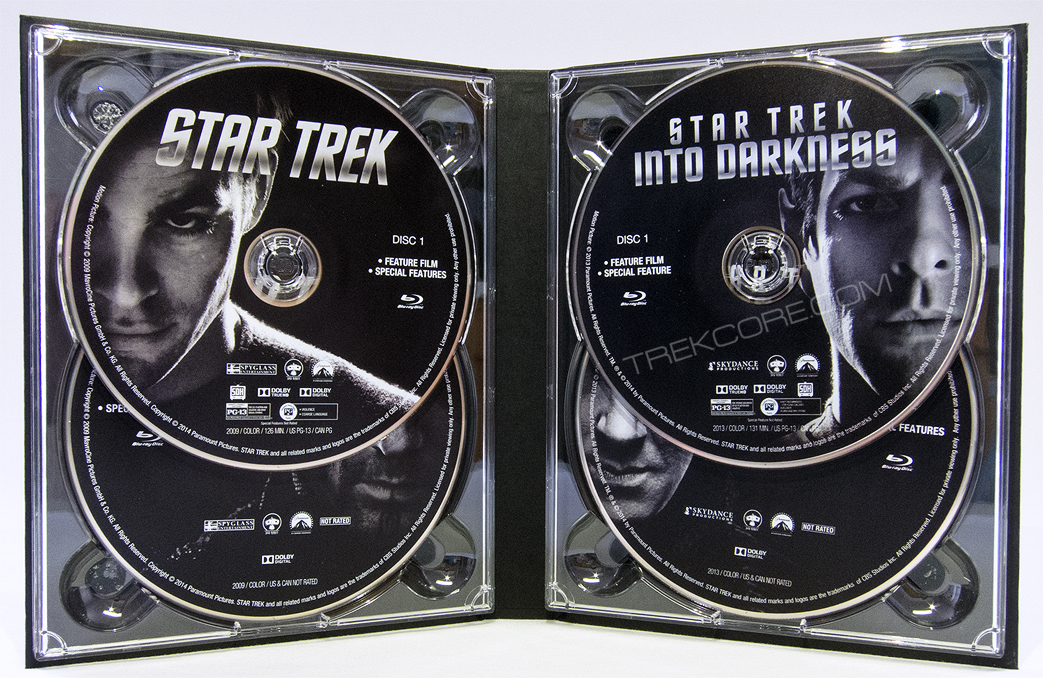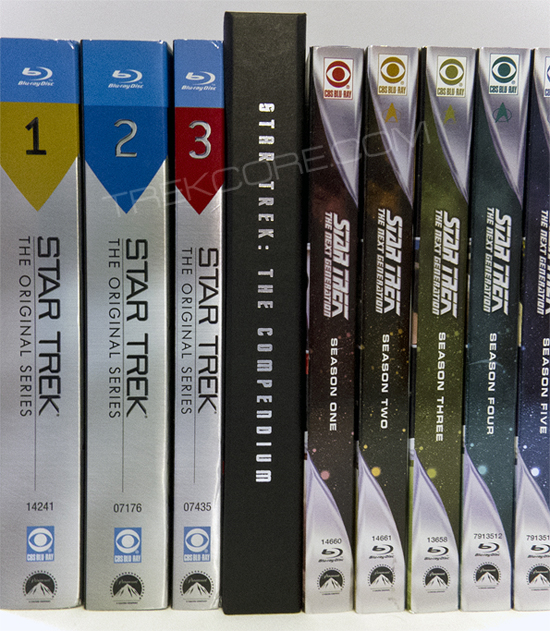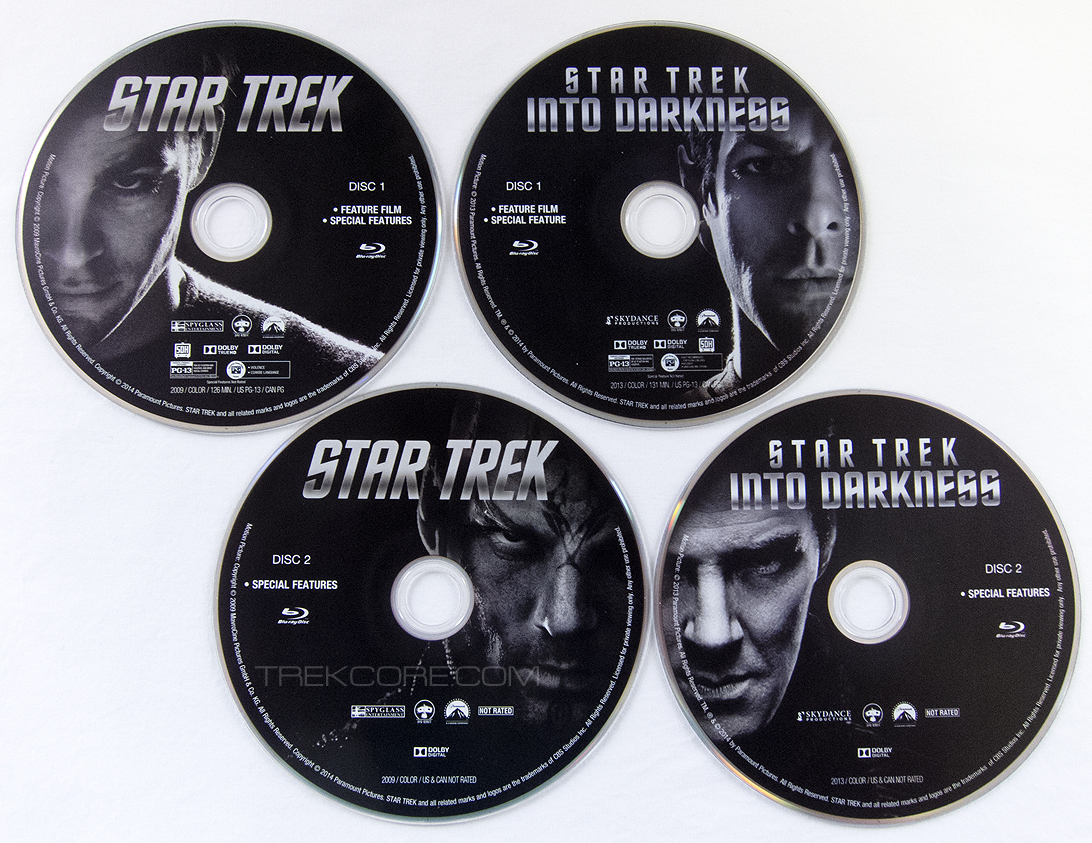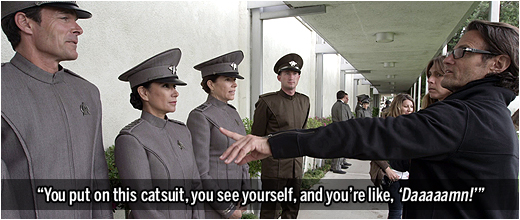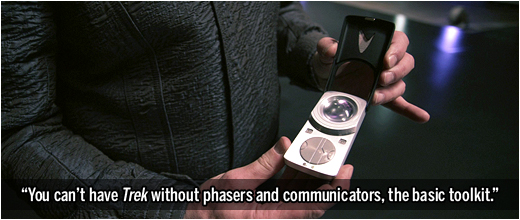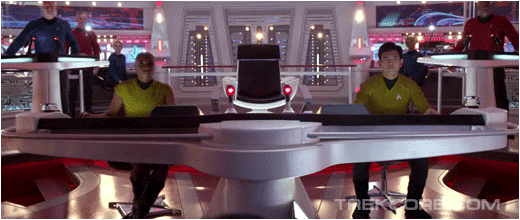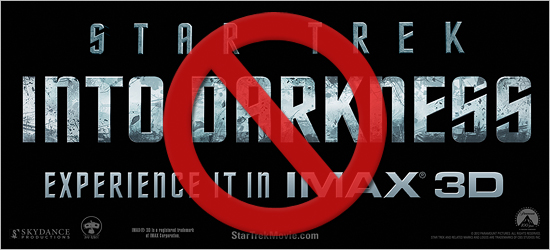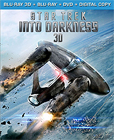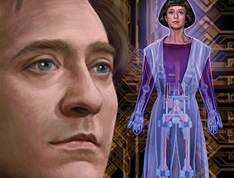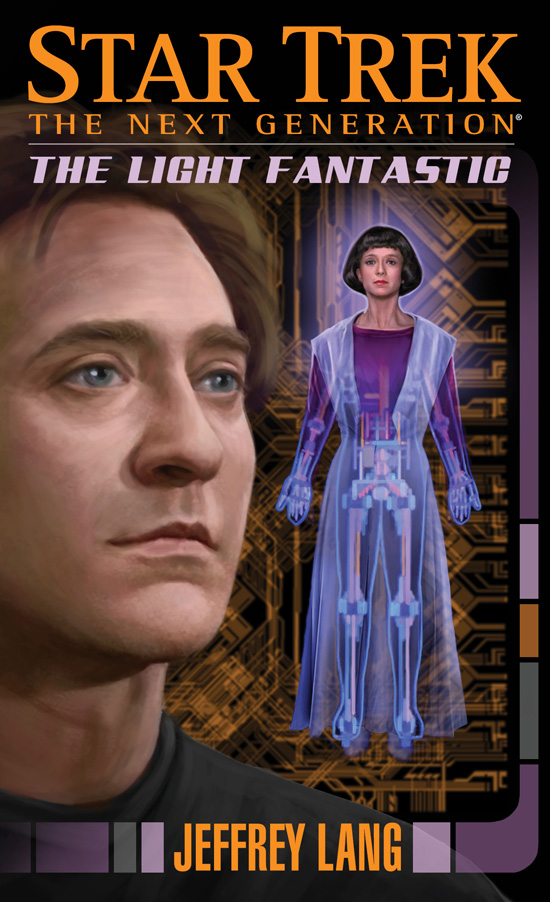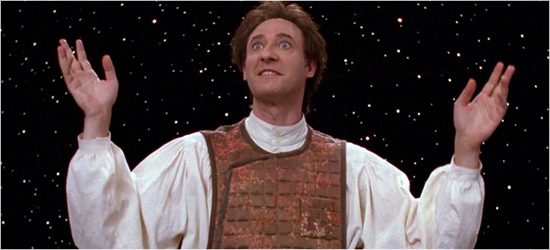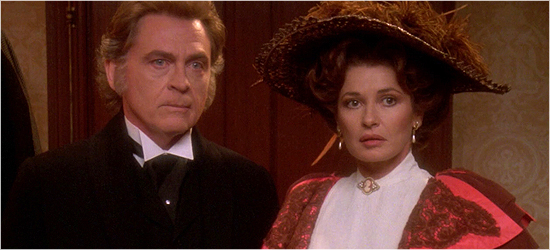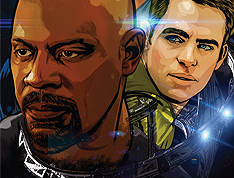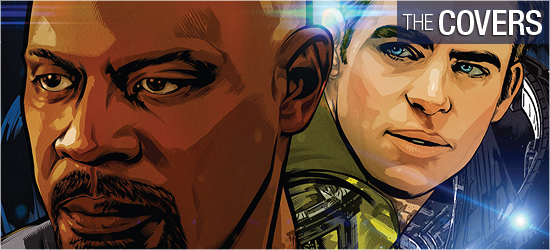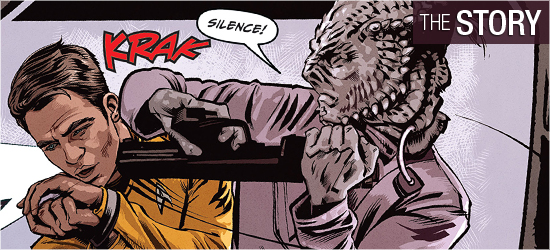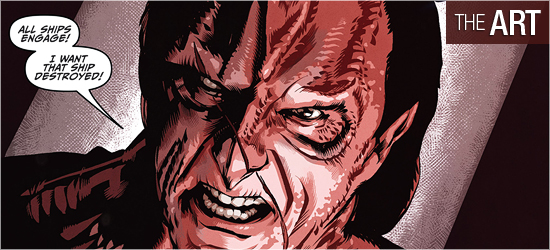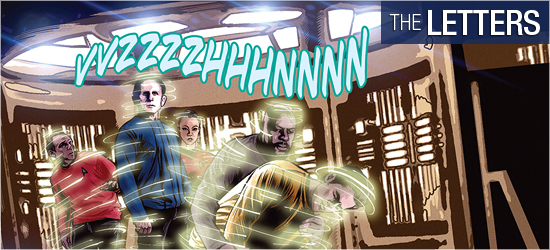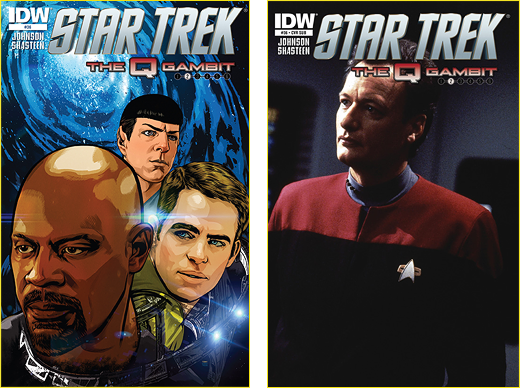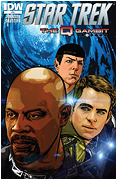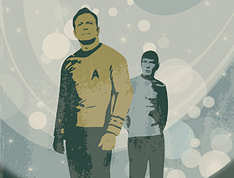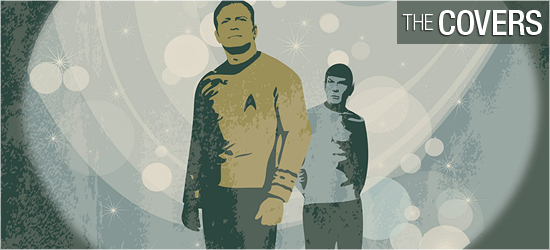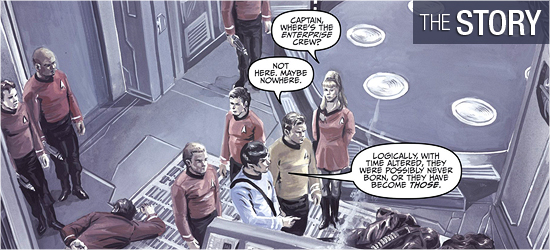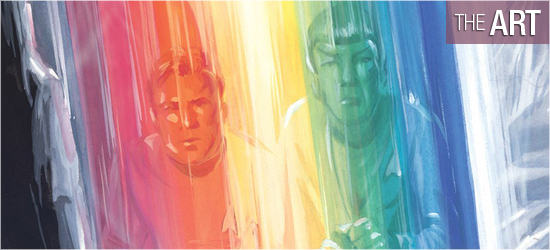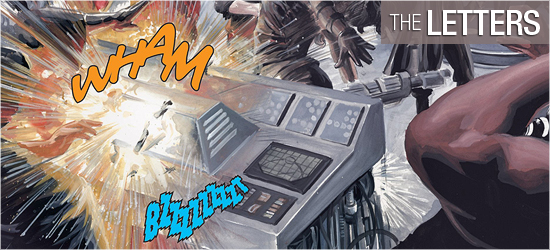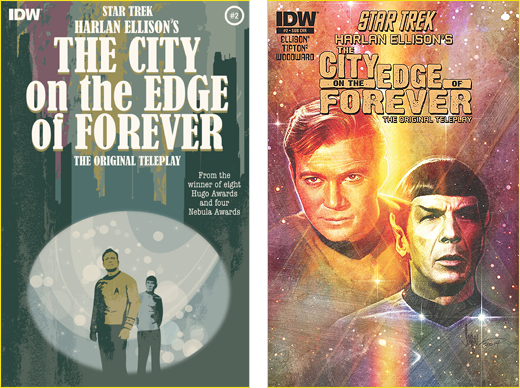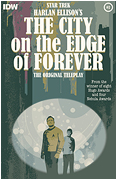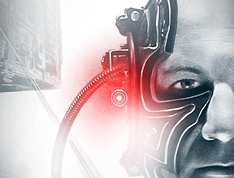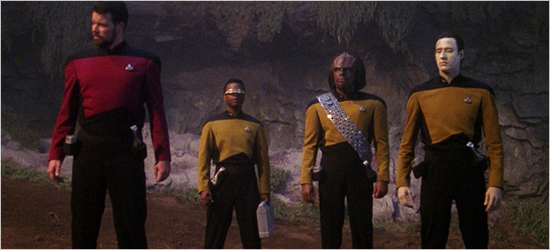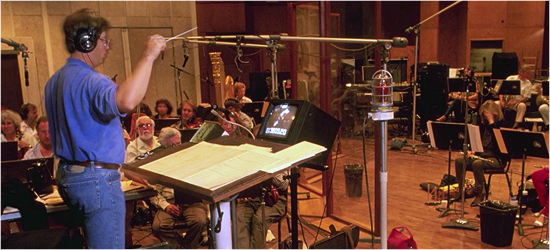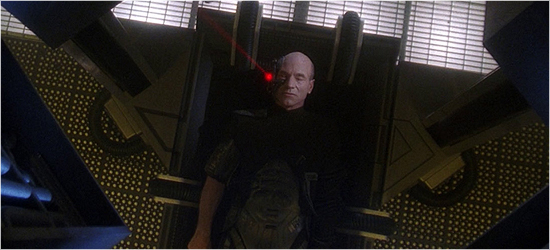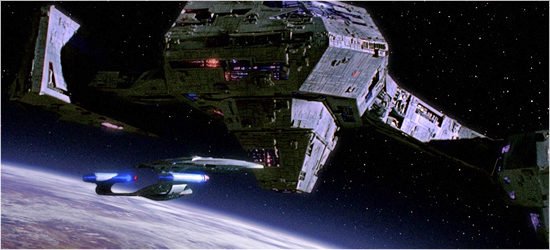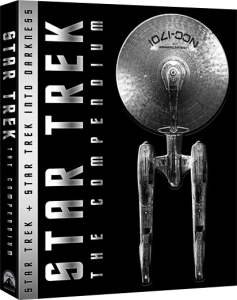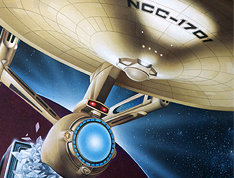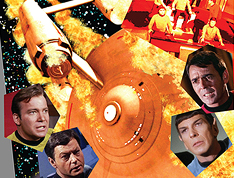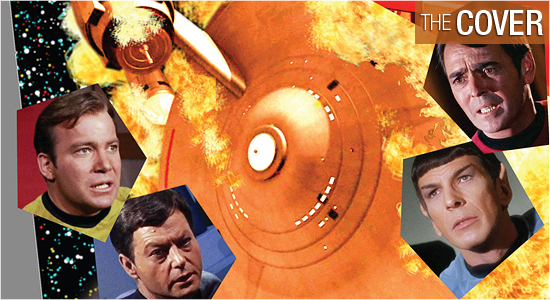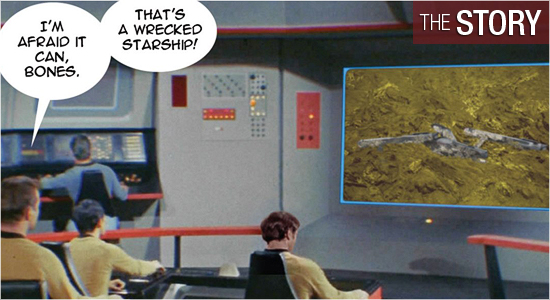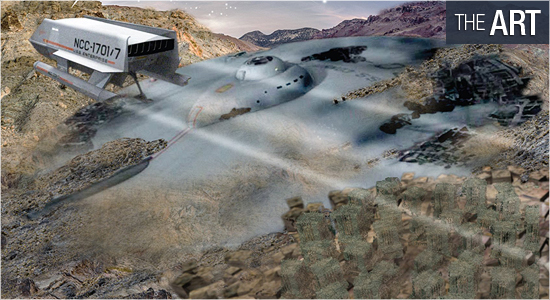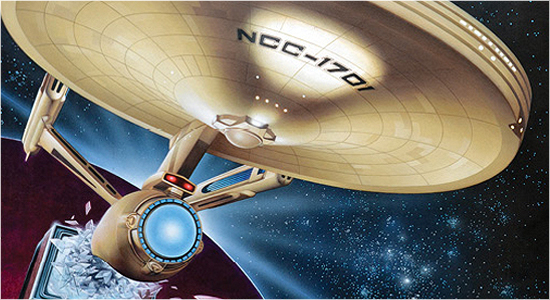
Last month, a long-rumored book chronicling the troubled production of Star Trek: The Motion Picture was finally announced from Creature Features Publishing: Return to Tomorrow – The Filming of Star Trek: The Motion Picture, by Preston Neal Jones.
Creature Features Publishing presents one of the great, legendary “long lost” Making-Of movie books: Return to Tomorrow: The Filming of Star Trek: The Motion Picture by Preston Neal Jones. This is a stunningly detailed and candid oral history going behind the scenes of one of the most famous films not only in Star Trek but science fiction and cinema history.
In 1979, Preston Neal Jones was given unparalleled access to the cast and creators of Star Trek: The Motion Picture for what was intended to be a cover story for Cinefantastique magazine. Owing to the late completion of the film and ambitious scope of the manuscript, it was never published—until now. This book is a priceless time capsule, a 672-page oral history in the words of 60 of the film’s cast and creators, interviewed as the film was being prepared for release—and nobody had any idea if it would succeed or even be finished on time.
From the stars (William Shatner, Leonard Nimoy and the entire cast) to the filmmakers (Gene Roddenberry, Robert Wise) to the brilliant visual effect artists, illustrators, model builders and technicians who realized the 23rd century on screen (costumes, sets, props, models, music, sound FX and more), no aspect of the film’s creation is overlooked. The entire manuscript has been laboriously fact-checked and prepared for modern publication, while retaining all of the candid comments from 35 years ago. The gorgeous cover art is the original painting by Roger Stine intended for Cinefantastique, courtesy the Daren R. Dochterman Collection.
Go behind the scenes of this pivotal sci-fi masterwork and hear the unvarnished, uncensored truth of how it was created. Strictly limited to 1,000 copies, this mammoth trade paperback is available for pre-order now and ship in October. The first 100 copies will come hand-signed by the author, so order your copy today!
Our Trek literature editor Dan Gunther caught up with Preston Neal Jones about the development of this book, and just why it took more than three decades for it to arrive in print.

TREKCORE: The Motion Picture is viewed by many Star Trek fans as a flawed piece, although it is remembered by many others with fondness. Why do you think this film has been regarded this way?
Preston Neal Jones: Well, in my experience, I don’t think those two views of the film are mutually exclusive, necessarily. What work of art doesn’t have its flaws? So, it’s possible to perceive flaws in a movie — always a personally subjective procedure, of course — and still have a fondness for it, warts and all. It becomes a question of degrees whether an individual thinks The Motion Picture overall (or any other movie) succeeds or fails when its perceived faults are weighed against its perceived virtues.
Actually, in the short time since we announced Return to Tomorrow, it’s been fascinating for me to read some of the online commentary, ranging across both of those two extremes you’ve described. In between them, you’ve also got people who found fault with the original picture who nevertheless feel that a lot of those problems were corrected in the director’s cut. And then, on the other hand, there are folks who like the 1979 version so much that they still prefer it to the one with Mr. Wise’s long-hoped-for revisions. It takes all kinds to make a galaxy.
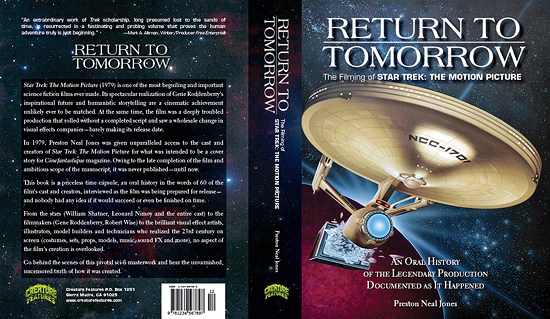
TREKCORE: The Motion Picture was released thirty-five years ago. Why did it take so long for this book to come to print?
PNJ: That’s a long story — or at least, an awful lot of short stories all adding up to one long gestation period. This project was originally planned to be a special double-size issue of the late, lamented Cinefantastique magazine, similar to ones they had brought out to celebrate Star Wars and Close Encounters of the Third Kind. For various professional and personal reasons, my opus took longer to complete than those other two, yet the Cinefantastique editor still promised that he was going to publish the Star Trek issue — but in the end, he never did.
Over the years, I tried to get it launched as a book, and my first port of call was naturally Pocket Books, the publisher authorized by Paramount to do any and all Star Trek books. Now, my book was never intended to be a muckraker, but it was an honest account of how Star Trek ran into difficulties — as every movie does, let’s face it — during its long production history. When I sent a sample of the first 100 pages or so to the Pocket Books editor assigned to Star Trek, he personally loved it, but he didn’t think the studio would go for publishing such a non-puffery piece about the film. So that was that.
In my book, I go into the whole back story of trying to find a home for Return to Tomorrow, including my efforts to have it be released an unofficial Trek publication, but I don’t think I included any talk about Pocket Books, so you’ve got a bit of an exclusive there. In any event, there’s a much more detailed answer contained in the introduction to my book –and in the meantime, anyone who’d like to learn a little more about Return to Tomorrow’s birth pangs can always read the Lost Books section at Steve Roby’s Starfleet Library website.
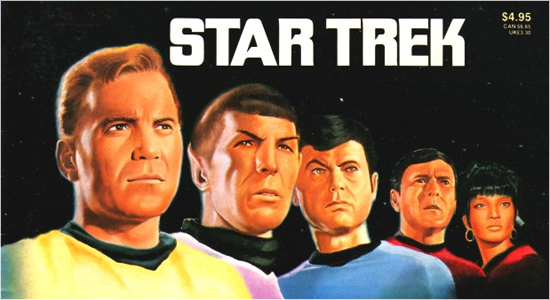
TREKCORE: What was the most memorable moment you had during the process of putting this book together?
PNJ: Oh, gosh, you don’t really think I can keep it down to just one, do you? In the first place, when Cinefantastique’s Fred Clarke initially offered me the gig, I got excited simply at the prospect of getting to meet three of my heroes: Robert Wise, Isaac Asimov, and Jerry Goldsmith. And suffice it to say that I was not disappointed when I conducted all three of those interviews. I have special memories, some humorous and some touching, connected with most of my encounters with the original TV cast.
You may remember, for instance, that Mr. Shatner had worked hard to get himself back into (space)shipshape for the film, and he was still maintaining his health regimen while promoting it all over the place. Our conversation took place at one of his favorite restaurants, and I’m still tickled recalling how he encouraged me to order a fantastically sinful dessert of which he was very fond — the waiter automatically knew what it would be from serving him on previous occasions — and then, when the grand concoction arrived, Captain Kirk dipped his fork into it so that he could enjoy just one little bite.
And I’m still very touched whenever I recall the warmth of Mr. Kelley when we had our conversation at the Paramount lot. After that, we kept in touch a few times on the phone, which was not typical of most of my interviewees, and I can still hear him asking me, “So, how’s everything in your young life?” He was also very generous in giving me permission to quote from a poem he had written, “The Big Bird’s Dream,” all about Roddenberry and the show, which you’ll find sprinkled throughout the early portion of Return to Tomorrow as a way of introducing each of his fellow actors.
Getting to walk onto the Enterprise set — which was surprisingly small — was a treat, of course. So was meeting and talking with the late Mark Lenard, and thanking him for his work, long before Star Trek, on a wonderful CBS special called Americans: A Portrait in Verses he’d done with James Whitmore and a lot of other fine actors. And I treasure sitting down with Mr.Goldsmith in his home studio to listen to the tape — which had just arrived in the mail that day — of his first version of the Enterprise drydock flyby, before Mr. Wise had insisted that he revise it, which led to the now-famous main title theme.

TREKCORE: Many fans have heard of the troubles that The Motion Picture went through during the making of the film. What was one incident that stood out to you as being particularly difficult?
PNJ: Where to begin? I have to say that, when the picture was finally given the green-light at Paramount after years of neglect, the one thing that was responsible for causing more problems than anything else was the studio’s painting themselves into a corner by committing to a fixed release date of December 7, 1979. From that one Pandora’s box emerged a whole slew of furies and demons, starting with rushing into production without a finished script, and culminating in the pressure — after the first FX team was let go — of having to hire two new FX teams to accomplish two year’s work in one year’s time.
That release deadline was just a real killer, seven ways from Sunday. Both Wise and Roddenberry begged the studio to grant them a reprieve, but they were completely stonewalled by the powers at Paramount, who stood to lose a gazillion bucks if they couldn’t deliver The Motion Picture to the theaters on time. Which they almost didn’t, as the last shot wasn’t filmed and inserted into the movie until just a few days before the Washington, DC, gala premiere at NASA.
Incidentally, as sort of a running commentary, I have section headings throughout the book which are direct quotes from the film’s dialogue. Perhaps the most meaningful of all, encapsulating the entire saga, is, “READY OR NOT, SHE LAUNCHES.”
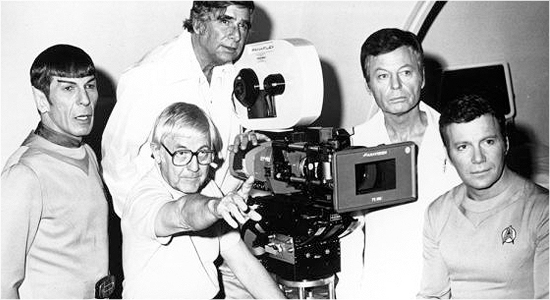
TREKCORE: One exciting aspect of this book is the fact that the interviews and accounts all come from the time of filming, rather than being reminiscences of the players long after the events it chronicles. What was it like to actually be on set with the producers and performers of The Motion Picture?
PNJ: Well, it was certainly a different experience than the one I’d had researching my first book about The Night of the Hunter, for which I conducted about ten or twelve interviews with a few key cast and crew members who were recollecting work experiences they’d shared decades previously. With Star Trek, you had some sixty people, many of them still licking their wounds from the heat of battle.
But I need to clarify one point: there was a lot of filming going on when I started, but it was all post-production. When I was first given the Cinefantastique assignment, principal photography had already been completed. Naturally, it was still vivid in everybody’s memory, but I was not on the soundstage while it was going on, and only got to tour the Enterprise sets when they were empty. So, while I was chatting amiably with actors, technicians, executives and craftspeople about their just-completed work on The Motion Picture, there was a vast contingent of artists, designers, modelers and photographers racing desperately around the clock to finish the film on time, and many of these people couldn’t sit down and talk with me until after their mighty labors were in the can.
That said, it was a fantastic experience getting to know all these great people while discussing their work and struggles. The whole thing was like a doctorate crash course in major movie-making. And the result of all that, I really feel, is a book which records a big studio Hollywood production in more detail than any book has ever been able to do before.
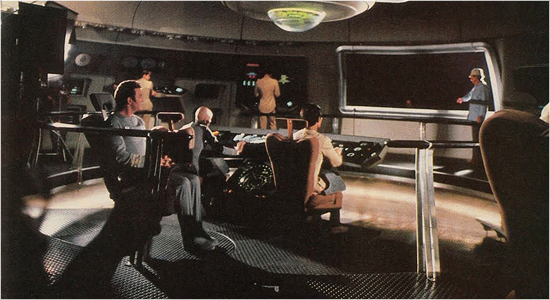
TREKCORE: Given the history of Star Trek both before and after The Motion Picture, how do you feel about its place in that history?
PNJ: That’s pretty clear, it seems to me. Whatever one thinks about TMP’s intrinsic quality, regardless of that whole controversy, there can’t be any doubt that without it, there wouldn’t be any history of Star Trek after the second cancellation of the NBC TV series, except for merchandising, cartoons, and, of course, conventions. Whatever it was which finally persuaded Paramount to revive Star Trek — and of course, a great deal of my book goes into all that — it was the ultimate product of that decision which finally proved beyond any doubt in the studio executive offices what Gene Roddenberry and so many fans already knew, that there were a hell of a lot of people out there with money in their pockets who were thrilled to spend it seeing a Star Trek feature.
Paramount had been sitting on a gold mine all those years, and now they finally started digging, and of course they haven’t stopped yet.
TREKCORE: Now that so much time has passed since the release of The Motion Picture, how do you feel about finally being able to tell the story behind the film?
PNJ: Nothing but happy, naturally — and particularly grateful to the good people at Creature Features who have turned out to be my angels at last. Of course, I’m also anxious to see how the book will be received after all these years, by film buffs, scholars and critics, surely, but most of all by the readership which it was always intended specifically to please — the Trekkers.
I’m hoping they’ll feel it was worth the long, patient wait.
Preston Neal Jones’ first excursion into cinematic oral history, “James Whale Remembered,” appeared in Forrest J Ackerman’s original Famous Monsters of Filmland. His first book, Heaven and Hell to Play With: The Filming of The Night of the Hunter, was hailed as one of the finest works of its kind and earned the Rondo Award for Book of the Year from the Classic Horror Film Board. Jones’ other writings have appeared in periodicals as disparate as Cinefantastique and American Art Review.
Active in the film/TV industry, he has served variously as creative advertising executive, script analyst and production assistant; introduced film screenings at American Cinematheque and the Los Angeles Film School; and contributed entries to Groves’ New Dictionary of Music and Musicians and The St. James Encyclopedia of Popular Culture. Jones’ liner notes have graced modern-day record- ings of music from such Golden Age film composers as Alfred Newman, Hans J. Salter and Frank Skinner.
At UCLA, Jones has lectured on the subject of film music, and at Roanoke College in Virginia (where he was writer in residence) he taught on the topics of The Night of the Hunter and Star Trek: The Motion Picture.

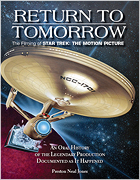 |
Pre-order Return to Tomorrow – The Filming of
Star Trek: The Motion Picture today!
 |
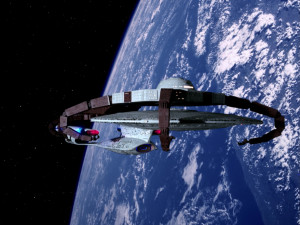

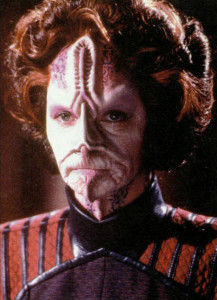 Speaking of deleted scenes, this trailer provides an early glimpse at the first Star Trek appearance of actress Martha Hackett — better known as Voyager villain Seska — who guested in “All Good Things…” as Androna, a Terrellian pilot who leads a fleet of ships to the Devron system to experience the anti-time anomaly’s healing effects.
Speaking of deleted scenes, this trailer provides an early glimpse at the first Star Trek appearance of actress Martha Hackett — better known as Voyager villain Seska — who guested in “All Good Things…” as Androna, a Terrellian pilot who leads a fleet of ships to the Devron system to experience the anti-time anomaly’s healing effects.![]()

![]()
